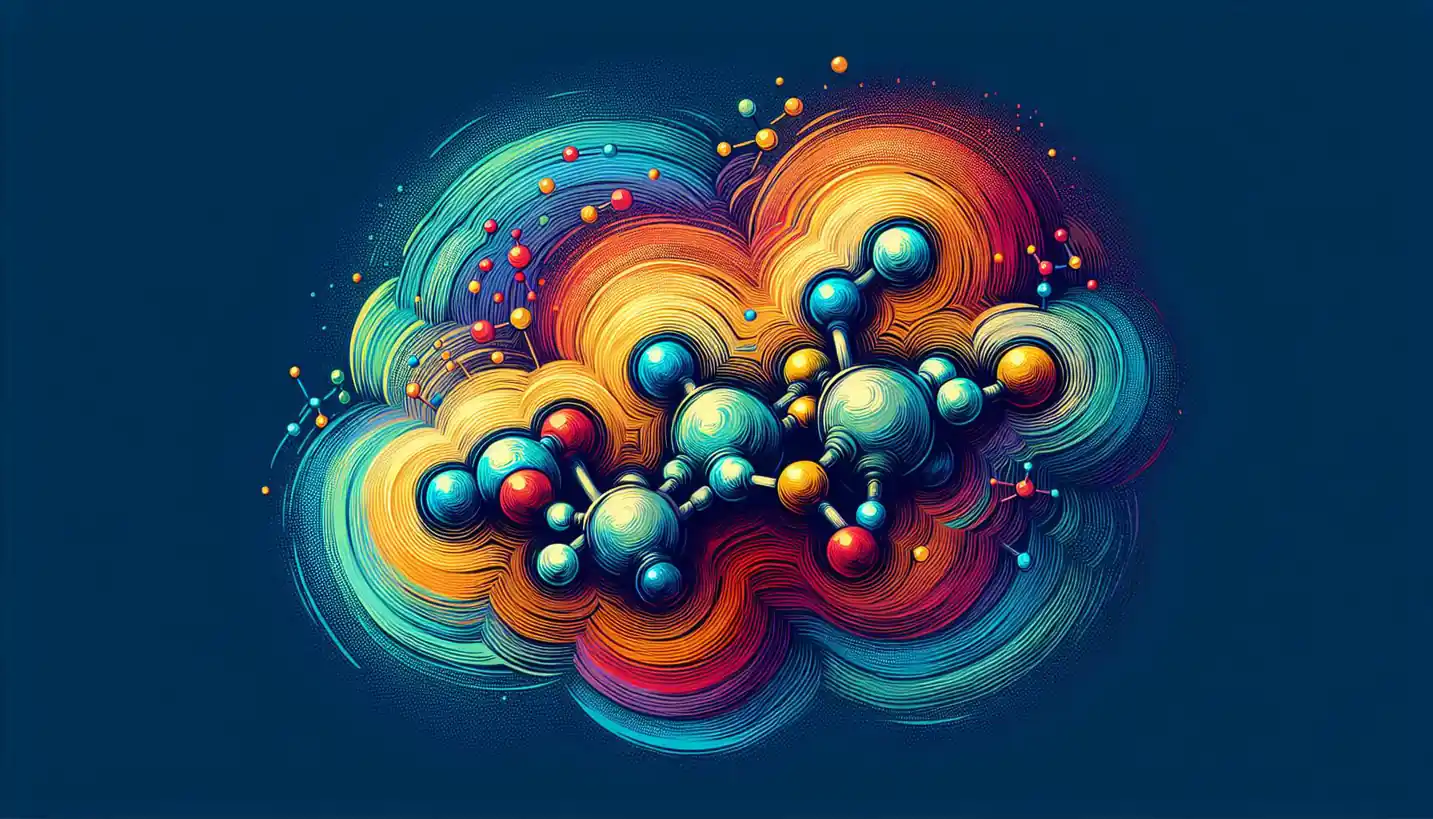· Chemistry · 4 min read
π-π Interactions: The Unsung Heroes of Supramolecular Chemistry
π-π interactions make flat aromatic rings align beautifully. Discover their quiet influence in the detailed mosaic of supramolecular chemistry.

Amidst the intricate dance of atoms and molecules, there’s a fascinating type of connection called π-π interactions. Now, if you’ve ever stacked blocks or played with magnets, you already have an inkling about how these interactions work. They’re like a special handshake between molecules that plays a big role in the world of supramolecular chemistry.
What are π-π Interactions?
Okay, let’s start with the basics. In chemistry, π (pi) bonds come into play when atoms share electrons in a way that’s a bit more spread out than with regular bonds, called σ (sigma) bonds. Imagine electrons in a σ bond as being in a straight line, while those in a π bond are more like a blanket spread over the atoms, forming what’s known as a pi-electron cloud.
Now, π-π interactions happen when these clouds get close. Think of them as two fluffy layers of clouds trying to snuggle together. Although these interactions are mainly seen between aromatic rings—those are structures with alternating single and double bonds, like benzene—they pack quite a punch in terms of influence.
How Do They Work?
Let’s dig deeper. Imagine your backyard. You have two flat baskets filled with fluffy marshmallows. If you push them close, the marshmallows squeeze and stick together just enough. That’s kind of how π-π interactions connect molecules. They’re not as strong as everyday bonds—more like gentle nudges than firm hugs—but they make molecules line up in specific ways.
These interactions rely on a kind of attractiveness between electron clouds. Although the exact mechanisms delve into quantum mechanics, the key idea is that the alignment allows molecules to come together, playing crucial roles in many chemical and biological processes.
Why Are They Important?
Now, you might be wondering why some simple interactions matter. Well, imagine trying to build a house of cards. Without the right balance and positioning, the whole thing would collapse. Similarly, π-π interactions help stabilize complex molecular structures.
In the natural world, these interactions are essential. They’re involved in DNA base pairing where they contribute to the stable helical structure. They also have a hand in protein folding, which is vital for biological function. In synthetic chemistry, they’re tools to create innovative materials with unique properties.
Real-World Examples
So where do we see these interactions making a difference? Let’s wander through a few scenarios:
In Medicine
Consider pharmaceutical drugs. Many are designed to fit snugly into their targets—like a key in a lock. π-π interactions allow for the precise alignment needed to ensure drugs bind effectively to their biological targets, enhancing their efficiency and reducing side effects.
In Electronics
Moving to the digital realm, π-π interactions are critical in organic electronics. Organic molecules called semiconductors can form flat, stackable layers, thanks to these interactions. This is vital in creating devices like organic light-emitting diodes (OLEDs) used in modern screens.
In Materials Science
In materials science, π-π interactions help create new polymers and nanomaterials with fascinating properties. These materials can become more efficient light absorbers or conductors, finding roles in solar cells or sensors.
The Science Behind the Scenes
At this stage, you might be curious about how scientists study something as delicate as π-π interactions. Here comes the fun part—calculations and experiments. Using sophisticated tools like spectroscopy, researchers can peek at how these molecular dance moves impact larger structures. Quantum chemistry allows scientists to model these interactions and predict how changes in molecular structures might influence behavior.
The Future of π-π Interactions
Now, what does the future hold for π-π interactions? With ongoing research, scientists are exploring ways to harness these interactions for cutting-edge applications. Imagine more efficient solar cells, faster-charging batteries, or even new forms of electronics that are lightweight and flexible.
Moreover, there’s an exciting realm called molecular machines—tiny, molecule-sized devices that could one day perform tasks at a microscopic scale. π-π interactions play a key role in designing and controlling these miniature marvels.
Wrapping It Up
So, next time you think about molecular interactions, picture those marshmallow baskets—simple yet impactful. π-π interactions may not have the flashiest name, but they’re the quiet workhorses behind vital processes in chemistry and biology. From everyday medicines to future technologies, their influence is vast and growing, paving the way for innovations that blur the line between science fiction and reality.
And as we continue to explore these interactions, who knows what other molecular secrets will be uncovered? Science is a journey, and π-π interactions are a prime example of the fascinating stops along the way.



